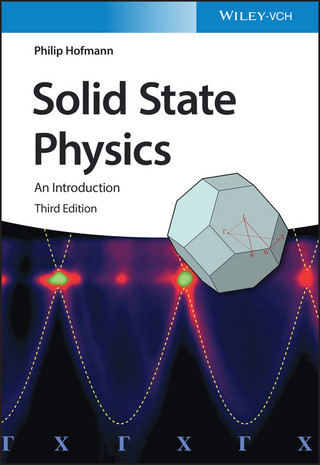
Principles of String Theory
Kluwer Academic / Plenum Publishers (Verlag)
978-0-306-42657-5 (ISBN)
- Titel ist leider vergriffen;
keine Neuauflage - Artikel merken
I. Lectures on Superstrings.- 1. Introduction.- 2. Bosonic Strings.- 3. Spinning Strings.- 4. Superstrings.- 5. The Heterotic String.- 6. The Operator Formalism.- 7. Field Theory for Free Superstrings.- 8. Interaction Field Theory for Type IIB Superstrings.- 9. Other String Interactions and the Possible Occurrence of Anomalies.- 10. Outlook.- Appendix. Some Notations and Conventions.- References.- II. Lectures on String Theory, with Emphasis on Hamiltonian and BRST Methods.- 11. Introduction.- General References.- 12. The Nambu-Goto String: Classical Analysis.- 12.1. Action Principle.- 12.1.1. Nambu-Goto Action.- 12.1.2. Quadratic Form of the Action.- 12.1.3. ?-Model Interpretation of the Action.- 12.1.4. Gauge Invariances.- 12.1.5. Global Symmetries.- 12.1.6. Conformai Symmetry.- 12.1.7. Boundary Conditions.- 12.2. Hamiltonian Formalism.- 12.2.1. Constraints.- 12.2.2. Meaning of the Constraints-Simplification of the Formalism.- 12.2.3. Hamiltonian Form of the Boundary Conditions (Open Case).- 12.2.4. Hamiltonian Expression for the Poincare Charges.- 12.3. A Closer Look at the Constraint Algebra.- 12.3.1. Explicit Computation.- 12.3.2. Virasoro Conditions.- 12.4. Fourier Modes.- 12.4.1. Open String.- 12.4.2. Closed String.- 12.5. Light-Cone Gauge.- 12.5.1. Conformai Gauges.- 12.5.2. Light-Cone Gauge.- 12.5.3. General Solution of the String Classical Equations.- 12.5.4. Independent Degrees of Freedom-Dirac Brackets.- 12.5.5. Light-Cone Gauge Action-Light-Cone Gauge Hamiltonian.- 12.5.6. Poincare Generators.- 12.5.7. Peculiarities of the Closed String.- 13. Quantization of the Nambu-Goto String.- 13.1. General Considerations-Virasoro Algebra.- 13.1.1. Introduction.- 13.1.2. Fock Representation-Virasoro Operators.- 13.1.3. Virasoro Algebra.- 13.1.4. Virasoro Constraints versus the Wheeler-De Witt Equation.- 13.1.5. Virasoro Algebra and Kac-Moody Algebras.- 13.1.6. Virasoro Algebra in Curved Backgrounds.- 13.2. Becchi-Rouet-Stora-Tyutin (BRST) Quantization of the String.- 13.2.1. BRST Quantization-A Rapid Survey.- 13.2.2. Classical Expression of the BRST Charge.- 13.2.3. Ghost Fock Space.- 13.2.4. Nilpotency of the Quantum BRST Operator.- 13.2.5. Critical Dimension in Curved Backgrounds.- 13.2.6. Physical Subspace.- 13.2.7. Remarks on the Doubling.- 13.2.8. Miscellanea.- 13.3. Light-Cone Gauge Quantization.- 13.3.1. Poincare Invariance of the Quantum Theory.- 13.3.2. Description of the Spectrum.- 13.3.3. Closed String-Poincare Invariance.- 13.3.4. Spectrum (Closed String).- 13.4. Covariant Quantization.- 13.4.1. Elimination of Ghosts as the Central Issue in the Covariant Approach.- 13.4.2. Vertex Operators.- 13.4.3. DDF States.- 13.4.4. No-Ghost Theorem for d = 26, ?0=1.- 13.4.5. Quantum Gauge Invariance.- 14. The Fermionic String: Classical Analysis.- 14.1. Local Supersymmetry in Two Dimensions.- 14.2. Superconformai Algebra.- 14.2.1. Square Root of the Bosonic Constraints and Fermionic Constraints.- 14.2.2. Boundary Conditions.- 14.2.3. Supergauge Transformations-Light-Cone Gauge Conditions.- 14.2.4. Poincare Generators.- 14.3. Fourier Modes (Open String).- 14.3.1. Fourier Expansion of the Fields.- 14.3.2. Super-Virasoro Generators..- 14.3.3. Poincare Generators.- 14.3.4. Remarks on the Closed String.- 14.3.5. Super-Virasoro Algebra.- 15. The Fermionic String: Quantum Analysis.- 15.1. Becchi-Rouet-Stora-Tyutin (BRST) Quantization of the Neveu-Schwarz Model.- 15.1.1. Ghost Fock Space.- 15.1.2. BRST Operator.- 15.1.3. Critical Dimension.- 15.1.4. Structure of the Physical Subspace.- 15.2. Becchi-Rouet-Stora-Tyutin (BRST) Quantization of the Ramond Model.- 15.2.1. Ghost Fock Space.- 15.2.2. BRST Operator.- 15.2.3. Critical Dimension.- 15.2.4. Structure of the Physical Subspace.- 15.2.5. Remarks on the Closed String.- 15.3. Light-Cone Gauge Quantization of the Neveu-Schwarz Model.- 15.3.1. Poincare Invariance.- 15.3.2. Neveu-Schwarz Spectrum.- 15.3.3. The Closed Neveu-Schwarz Spectrum.- 15.4. Light-Cone Gauge Quantization of the Ramond Model.- 15.4.1. Poincare Invariance.- 15.4.2. Ramond Spectrum.- 15.4.3. Closed String.- 15.5. Supersymmetry in Ten Dimensions.- 15.5.1. Open String.- 15.5.2. Closed String.- 16. The Superstring.- 16.1. Covariant Action.- 16.1.1. SUSY(N)/SO(d - 1,1) as Target Space.- 16.1.2. Invariant Actions.- 16.1.3. Local Supersymmetry.- 16.1.4. Equations of Motion and Boundary Conditions.- 16.1.5. Structure of Gauge Symmetries.- 16.1.6. Super-Poincare Charges.- 16.1.7. Hamiltonian Formalism.- 16.1.8. Light-Cone Gauge.- 16.2. Quantum Theory.- 16.3. The Superparticle.- 16.3.1. Action-Gauge Symmetries.- 16.3.2. Super-Poincare Charges.- 16.3.3. Hamiltonian Formalism.- 16.3.4. Meaning of the Constraints.- 16.3.5. Siegel's Model.- 16.3.6. Light-Cone Gauge.- 17. The Heterotic String.- Appendix A. BRST-Based Demonstration of the No-Ghost Theorem for the Bosonic String.- Appendix B. ? Matrices in Ten Dimensions.- B.1. Symmetry Properties.- B.2. Fierz Rearrangements.- Appendix C. Light-Cone Gauge Decomposition of Ten-Dimensional Spinors.- References.
| Erscheint lt. Verlag | 31.1.1988 |
|---|---|
| Reihe/Serie | Series of the Centro de Estudios Cientificos |
| Zusatzinfo | biography |
| Verlagsort | Dordrecht |
| Sprache | englisch |
| Themenwelt | Naturwissenschaften ► Physik / Astronomie ► Atom- / Kern- / Molekularphysik |
| ISBN-10 | 0-306-42657-9 / 0306426579 |
| ISBN-13 | 978-0-306-42657-5 / 9780306426575 |
| Zustand | Neuware |
| Haben Sie eine Frage zum Produkt? |
aus dem Bereich


